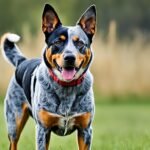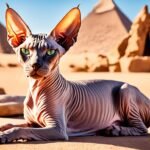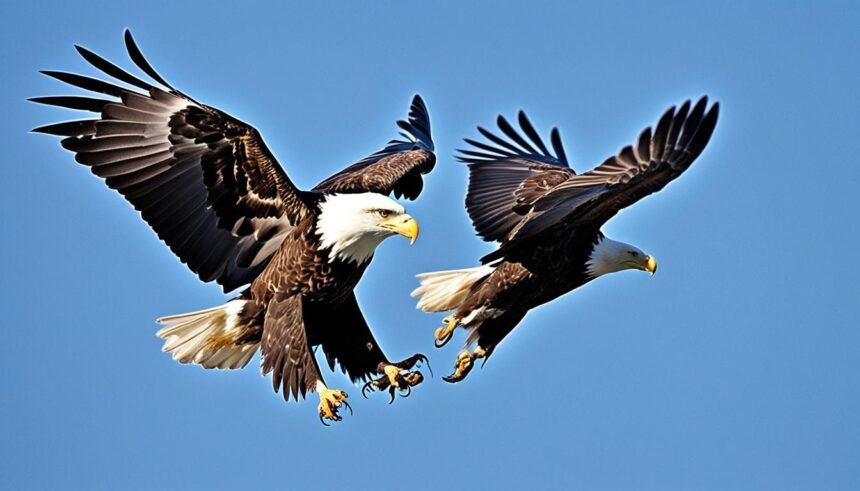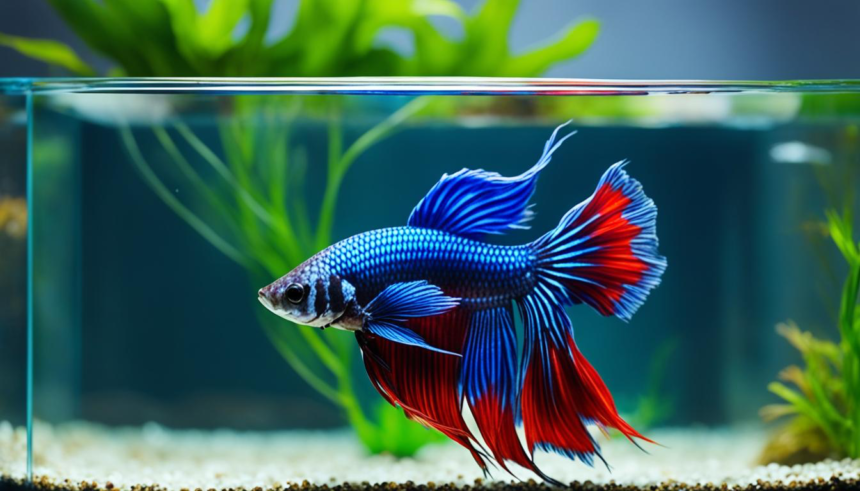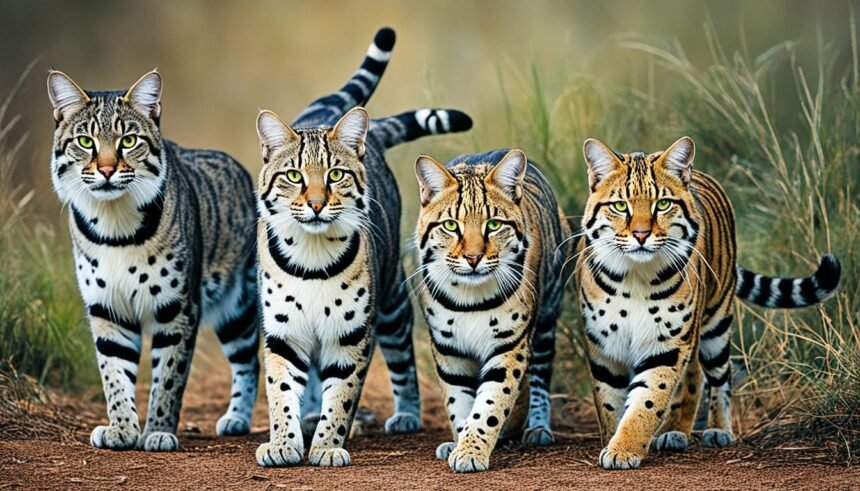The German shepherd dog, or GSD, is a top pick in the US. It placed fourth in popularity on the AKC’s 2021 list. People usually know German shepherds for their short coats. But there’s also a rare kind with long hair.
The long haired German shepherd is just as loyal and brave. Yet, finding them is not easy. Their long hair comes from a rare gene. Breeders who focus on these dogs are not common. This is because long hair isn’t AKC approved.
Despite being not as common, these shepherds are becoming more popular. People love their look and kind nature. These dogs usually weigh 50-90 pounds. Males are larger than females.
They live 7-10 years, like the standard kind. If you want one, it’s crucial to know their care needs. This guide will cover everything from their history to daily care.
History of the Long-Haired German Shepherd
The German shepherd breed was shaped by Max von Stephanitz. He was a German officer with a dream. Von Stephanitz focused on creating the best dog for herding in Germany. After carefully choosing and breeding dogs, he saw 35 years dedicated to perfecting the breed. He looked for traits like loyalty and smarts.
One thing he didn’t like was long hair. He thought it might not help them work in tough weather. So, the long-haired version wasn’t his favorite.
Max von Stephanitz and the Development of the German Shepherd Breed
Max von Stephanitz is the main guy behind German shepherds. He had a goal to make the best German working dog. He selected and bred several German herding dogs. His picks had the traits he wanted, like being smart and loyal.
Von Stephanitz worked on this for 35 years. But, he didn’t think the long-haired German shepherds were the best choice. He believed their long fur could hurt their working skills in tough weather.
The Verein für Deutsche Schäferhunde (SV) and the Long Haired Variant
Von Stephanitz started the Verein für Deutsche Schäferhunde (SV). This is the club for German shepherd dogs. At first, they said no to long-haired German shepherds without an undercoat. They did this because they thought these dogs wouldn’t be as good at work.
Later, they decided that no long-haired shepherds fit the bill, even those with an undercoat. The SV believed this type didn’t meet the breed’s standard. They worried these dogs might not work well because of their fur.
But, despite the trouble, people still liked the long-haired shepherds. In 2010, the SV changed their mind. They saw the growing interest in these dogs. They said yes to them at dog shows again.
However, the United States is different. The American Kennel Club (AKC) still doesn’t list long-haired German shepherds in their official standards.
| Year | Event |
|---|---|
| 1899 | Max von Stephanitz founds the Verein für Deutsche Schäferhunde (SV) |
| Early 1900s | SV bans long-haired German shepherds without an undercoat from dog shows |
| Late 1900s | SV extends the ban to all long-haired German shepherds |
| 2010 | SV lifts the ban on long-haired German shepherds |
| Present | AKC still does not recognize long-haired German shepherds as part of the breed standard |
Long-haired German shepherds are still rare but people love them. They may not meet the usual standards. But they are just as smart, loyal, and hardworking as other German shepherds. This makes German shepherds among the most loved dogs in the world.
Physical Characteristics of Long Haired German Shepherds
Long haired German shepherds stand out with their luxurious, long coats, different from the common short coats. They are similar to the regular German shepherd in many ways. But their special coat and appearance make them popular among dog lovers.
Coat Type and Appearance
The long-haired GSD has a unique coat, dense and silky. It’s especially noticeable on their ears, chest, and tail. This special coat comes from a recessive gene, needing both parent dogs to carry it for puppies to be the same.
Their coat can be in various colors, like black and tan, sable, or pure black. Some may have rare colors such as white, liver, or blue.
Though they have a longer coat, long-haired GSDs keep the shepherd’s signature features. These include their pointed ears and noble face. The added fluff around their ears and the long chest hair resembling a lion’s mane make them stand out.
Size and Weight
These dogs are quite large. Males typically weigh 65 to 90 pounds and stand 24 to 26 inches tall. Females are a bit smaller, weighing 50 to 70 pounds and standing 22 to 24 inches tall. Their long hair makes them look bigger than short-haired German shepherds.
| Gender | Weight (lbs) | Height (inches) |
|---|---|---|
| Male | 65-90 | 24-26 |
| Female | 50-70 | 22-24 |
Long haired German shepherds aren’t a different breed, even if they look different. They are part of the German shepherd breed and should meet the same expectations for size and temperament. This includes breeds like the Shiloh shepherd and the white shepherd. The difference is only in their coat.
Temperament and Personality Traits

Long-haired German shepherds are famous for their great nature and personality. Their coat sets them apart from short-haired German shepherds. Still, they share the same great qualities. This makes the breed popular worldwide.
Loyalty and Affection Towards Family
Long-haired German shepherds stand out for being loyal and loving. They build strong ties with their families. They are excellent with kids if introduced right early on. Although they may seem distant with strangers, they deeply care for their family and friends.
Intelligence and Trainability
German shepherds, known for their intelligence, excel in learning and training. They love to be mentally challenged. This makes them fit for many types of work and companionship. Positive training and learning new things excites long-haired German shepherds.
| Breed | Intelligence Ranking | Trainability |
|---|---|---|
| German Shepherd | 3rd | High |
| Border Collie | 1st | High |
| Poodle | 2nd | High |
Protective Nature and Guarding Instincts
Long-haired German shepherds have a protective instinct from their herding and guarding background. They are always watchful, making them strong protectors. They assess dangers well and act to protect their loved ones. It’s key that they are trained and socialized properly to avoid any aggression issues.
In summary, long-haired German shepherds showcase the best of their breed’s character and temperament. Their loyalty, intelligence, and protective instincts suit active families. They need mental and physical engagement from their owners. By supporting these natural traits, owners receive the love of a dependable and skilled dog.
Training and Socialization
Training and socialization are key to a long haired German Shepherd being well-behaved and friendly. These dogs are very smart and can be great friends with the right help. It’s important to start socialization and training early, so they grow up sure of themselves.
Even though long haired German Shepherds look different, they’re just as smart as the short-haired kind. So, they’re great at learning things and do well in jobs like helping the police or in search and rescue teams. Male and female German Shepherds can do the same work, no matter their coat’s length.
Importance of Early Socialization
Early socialization is vital for a pup’s first few months. They’re very open to new things at this time. It’s important to introduce them positively to all kinds of people, animals, and places. This way, they’re less likely to be scared or aggressive later on.
How we introduce them to kids, dogs, and new places shapes their future behavior. Good experiences with different-looking people or odd things prevent them from being scared later. So, a well-socialized dog is more likely to be kind to everyone, even if they’re a bit reserved by nature.
Positive Reinforcement Training Methods
Long haired German Shepherds do best with positive training. This means rewarding them for doing the right things. This not only makes them learn faster, but it also brings you closer to your dog. Consistent training with lots of encouragement leads to a happy, well-behaved pet.
Through positive training, you can teach your dog simple things like sitting and coming when called. You can also train them in more complex tasks like agility or finding hidden objects. Clicker training, in particular, is super helpful for this kind of training.
Despite being less common, long haired German Shepherds don’t need special training because of their coat. But, choosing a breeder who checks for health issues can help avoid problems. This makes sure your dog’s training and life are as good as they can be.
To sum up, early socialization and positive training are crucial for a great long haired German Shepherd. By offering plenty of good experiences and steady training, you can ensure your dog does their best. They’ll not only be a beloved friend but also a valuable partner for work.
Exercise and Energy Levels
Long-haired German shepherds are full of energy. They need lots of exercise to stay healthy both physically and mentally. As a working breed, they love to be busy. If they don’t get enough exercise, they might get bored and start doing things they shouldn’t at home.
Not exercising them enough could also make them very protective of their space. You might notice them always watching outside from the windows.
Being outdoors and playing is where German shepherds excel. They are not only intelligent but also adaptable. This makes them perfect for jobs like policing, detecting bombs or drugs, finding people, and aiding those with disabilities.
Yet, their smarts mean they can figure out when they can break the rules. For example, they might understand when they’re supposed to be on a leash or not.
| Activity | Recommended Duration | Benefits |
|---|---|---|
| Daily walks | 30-60 minutes, twice a day | Provides physical exercise and mental stimulation |
| Running or jogging | 20-30 minutes, a few times a week | Helps maintain cardiovascular health and muscle tone |
| Playtime (fetch, tug-of-war) | 15-30 minutes, daily | Strengthens bond between dog and owner, offers mental stimulation |
| Agility training | 30-60 minutes, a few times a week | Enhances coordination, obedience, and problem-solving skills |
It’s important to keep several factors in mind when planning for your German shepherd’s workouts:
- Age: Puppies and older dogs need different types of exercises than adults.
- Health status: If your dog has health issues, they might need a unique workout routine.
- Individual energy levels: Every German shepherd is different. Some are more active than others.
Watch how your German shepherd reacts to workouts. If they seem very tired, or they start to lose interest, they might need a break. Adding rest days to their workout plan is a must. This helps their body recover and avoids injuries from too much exercise.
Good exercise and mental challenges keep your long-haired German shepherd happy. They make for better pets or working partners. This way, they stay calm and content.
Grooming and Coat Care
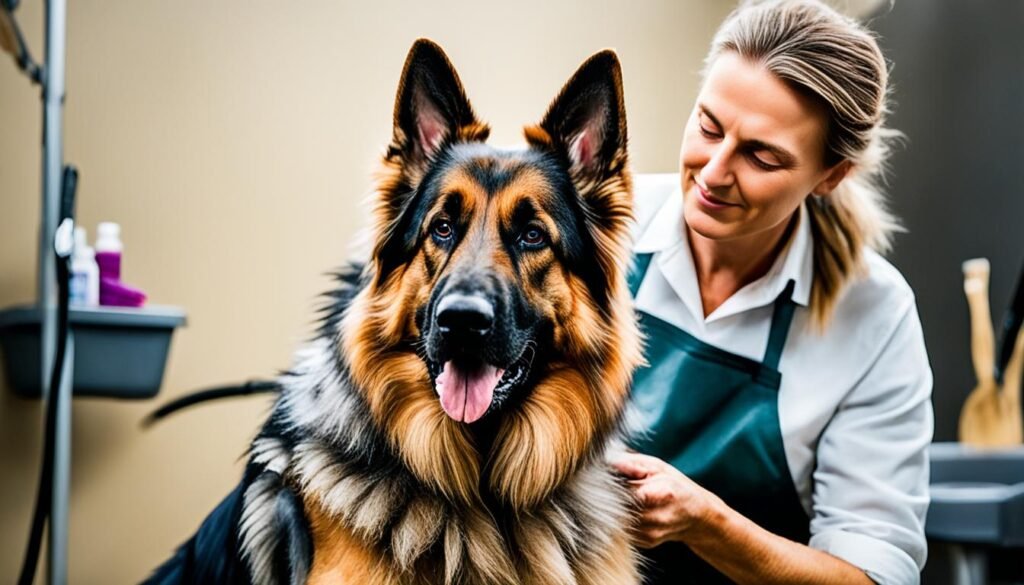
Long haired German Shepherds have coats that need lots of care. Their fur looks amazing but needs work to keep it that way. Knowing how to groom a long-haired German Shepherd is key to their well-being.
Brushing and Bathing Requirements
For these dogs, brushing is very important. They have a dense undercoat and a long outer coat. Not brushing often can lead to mats and tangles. Brush every other day. This will keep their fur smooth and shiny.
When it’s time for a bath, be careful. Too many baths can make their skin dry. Use a gentle, dog-safe shampoo. Only bathe them when they really need it.
Shedding and Seasonal Coat Blowing
German Shepherds with long hair shed a lot. They also blow their coats twice a year. During these times, they shed more undercoat. Using a de-shedding tool can help.
Remember, never shave a German Shepherd’s coat. Their double coat keeps them safe from the weather.
| Grooming Task | Frequency |
|---|---|
| Brushing | Every other day |
| Bathing | As needed, avoid over-bathing |
| Nail Trimming | Every 2 months or as needed |
| Ear Cleaning | Once a week |
| Teeth Brushing | 2-3 times a week |
Don’t forget about grooming beyond the coat. Trim nails, clean ears, and brush teeth regularly. A vet can help set up a good grooming plan for your dog.
Putting in the work for grooming pays off. Your German Shepherd will be healthy, cozy, and gorgeous. This care shows your love for them.
Health Concerns and Lifespan
German shepherds, known for their strength and loyalty, are usually healthy. However, they can face some health problems like all dogs do. They have an average lifespan of 7-10 years. When getting a German shepherd, make sure the breeder checks for common health issues. These checks can help avoid health troubles later on.
Common Health Issues in German Shepherds
In a 2017 study, it was found that 63% of U.K. German shepherds had a health disorder. Some common problems include:
- Hip and elbow dysplasia
- Gastric dilatation volvulus (GDV) or bloat
- Degenerative myelopathy (DM)
- Perianal fistula or anal furunculosis
- Cauda equina syndrome and lumbosacral syndrome
Hip and Elbow Dysplasia
Hip and elbow dysplasia are issues for many German shepherds. The Orthopedic Foundation of Animals says over 139,000 had hip dysplasia. It was found in nearly 21% of the dogs. Elbow dysplasia was found in almost 19%. These problems can lead to pain, trouble walking, and less movement as the dog gets older.
Bloat and Gastric Dilatation-Volvulus (GDV)
Bloat is a dangerous problem that affects big dogs like German shepherds. It happens when the stomach fills with gas and twists. This can be deadly. The Merck Veterinary Manual says about 25 to 30% might not make it.
| Health Issue | Affected Age Group | Prevalence |
|---|---|---|
| Hip Dysplasia | All ages | Nearly 21% |
| Elbow Dysplasia | All ages | Nearly 19% |
| Degenerative Myelopathy (DM) | Middle to older-aged (4-14 years) | Not specified |
| Gastric Dilatation Volvulus (GDV) | All ages | 25-30% mortality rate |
| Perianal Fistula or Anal Furunculosis | Middle-aged | Not specified, high recurrence rates |
| Cauda Equina Syndrome and Lumbosacral Syndrome | Senior (7+ years) | Not specified |
Keeping your German shepherd healthy involves regular vet visits, good food, and lots of walks. Also, choose a breeder who cares about health checks. This can help your German shepherd enjoy a long, happy life with your family.
Long Haired German Shepherd Diet and Nutrition
It’s very important to give your long haired German Shepherd a balanced diet. They’re known for being active and strong. So, they need food that’s right for their needs, whether they’re a puppy, an adult, or a senior dog.
German Shepherds are mostly carnivores. They love to eat protein. But about half of their food is carbs. These give them energy. High-fiber diets help with their digestion and nutrient absorption. Avoid foods with fish, soy, or rice for them.
Choosing an AAFCO-approved diet is best. These diets are tested and meet high standards for nutrition. If you feed them this food, they might not need extra vitamins or minerals.
How much and how often you feed your German Shepherd depends on their age and how active they are. Puppies need to eat more often than adult dogs. Make sure they’re not too thin or too heavy. Adjust their food as needed to keep them healthy.
| Nutrient | Importance for German Shepherds |
|---|---|
| Vitamin A | Promotes healthy vision, skin, and immune function |
| Vitamin B-12 | Supports nervous system function and red blood cell formation |
| Vitamin D | Regulates calcium and phosphorus balance for strong bones and teeth |
| Vitamin E | Acts as an antioxidant to protect cells from damage |
| Calcium | Essential for bone and tooth development and maintenance |
| Zinc | Supports immune function, skin health, and wound healing |
| Biotin | Promotes healthy skin, coat, and nail growth |
| Folic Acid | Plays a role in red blood cell production and nervous system function |
| Iron | Essential for the formation of hemoglobin and oxygen transport |
| Potassium | Maintains proper muscle and nerve function, as well as heart health |
Some German Shepherd owners choose homemade or raw food diets. These can be good if done right. But, talk to a vet or nutritionist first. Introducing a new diet should be slow to avoid issues.
Avoid letting your dog exercise right before or after eating to prevent bloat. Offering several small meals a day is better than one big meal. This can help keep your dog healthy and prevent serious health issues.
By giving your German Shepherd the best diet, you support their health and happiness. Regular vet visits and watching their weight are also key. This helps them live a long and healthy life.
Living with a Long Haired German Shepherd
Getting a long haired German shepherd is a big step. They are the fourth most loved dog according to the American Kennel Club. These dogs are loyal, smart, and protective but also have a lot of energy. This means they need a special kind of care and may not fit every home.
Thinking about welcoming one home involves a lot. They need a lot of space and love. If you can give them your time and energy, they’ll be a perfect fit for an active family. Just remember, they’ll be with you for 7 to 10 years or more, so it’s a long-term commitment.
Ideal Living Conditions and Home Environment
These dogs need a big space to live because of their size and energy. Males can weigh 50-90 pounds and females 50-70 pounds. A large, fenced yard will give them the room they need to run and play safely.
Inside the house, they should have a place to rest and call their own. A cozy bed or crate works wonders for them. Also, keep them busy with toys and puzzles to avoid any bored doggy mischief.
Compatibility with Children and Other Pets
German shepherds do well with kids because they are protective and full of energy. It’s fun to watch them and the children play together. But, always keep an eye when they’re together just to make sure everyone stays safe and happy.
With early training and socialization, they can also get along with other pets. This includes cats and dogs. Puppy classes or a professional trainer can help your dog adjust well to a new furry friend.
| Activity | Minimum Daily Requirement |
|---|---|
| Exercise (walks, runs, hikes, fetch) | 90 minutes |
| Mental Stimulation (puzzle toys, nose work) | 30 minutes |
| Training and Socialization | Ongoing throughout life |
Your long haired German shepherd’s health and happiness depend on exercise and play. They need at least 90 minutes of physical activity every day. Don’t forget about mental exercise too. Playing with puzzle toys or doing nose work keeps them sharp and happy, avoiding any mess at home.
Living with one is a special experience if you’re ready for the challenge. Give them a loving home, constant training, and plenty of play and they’ll reward you with their loyalty and joy.
Conclusion
Long haired German Shepherds are a stunning type of the German Shepherd breed. Their long, flowing coats make them stand out. But, they share the same qualities as the standard German Shepherds. This includes being devoted, smart, and protective.
With the right training and care, they make great pets for active families. Or for those who know about caring for dogs. They not only look unique but are also very loyal pets. They quickly become a beloved part of any family.
Owning a German Shepherd, whether long or short-haired, is a big commitment. It needs your time, effort, and dedication. Long haired German Shepherds can be quite large. They weigh between 50 to 90 pounds. And stand at 22 to 26 inches high at the shoulder.
You must keep their coats from tangling by grooming them regularly. They also need a top-notch diet fitting for their size and energy. Like all breeds, they have specific health risks. These include problems with their joints, back legs, and a spinal disease. So, visiting the vet often is very important for their health.
Know what it takes to care for this breed before you get one. This way, you can be sure to give them a great home. With love and proper care, a long haired German Shepherd will be your faithful, loving friend for many years.
FAQ
Are long haired German Shepherds rare?
Yes, long haired German Shepherds are indeed rare. Their long coat doesn’t meet the usual breed standard. This almost led to them being less common in history. The long coat comes from special, less common genes, making them hard to find.
Do long haired German Shepherds have the same temperament as standard German Shepherds?
Long haired German Shepherds share the loyal and intelligent nature of the standard ones. They are also very protective. With the right training and socializing, they become wonderful family dogs.
How much exercise do long haired German Shepherds need?
These dogs are very active and need lots of exercise, at least 90 minutes every day. This exercise can be in the form of long walks, runs, playing fetch, and more. They also need games that challenge their minds, like puzzle toys.
Do long haired German Shepherds shed a lot?
Yes, they do shed a lot due to their double coat, including the long haired ones. Twice a year, they shed more heavily. During these times, they need extra grooming.
Are long haired German Shepherds prone to any health issues?
Yes, purebred German Shepherds, whether long or short haired, might face certain health issues. These include allergies, and various joint and heart problems. Regular vet check-ups and proper care are crucial. They help in dealing with these health issues.
Can long haired German Shepherds be trained as working dogs?
Long haired German Shepherds are smart, just like the short haired ones. This makes them excellent for various working roles. These include police duties, search and rescue, and assisting people with disabilities.
Are long haired German Shepherds good with children?
Typically, German Shepherds, including the long haired type, get along well with children when they are well-trained and socialized. They bring love and protection to the family. Their energy also makes them fun playmates for active kids. Yet, all dog-child interations must always be watch closely, no matter the dog’s breed.


